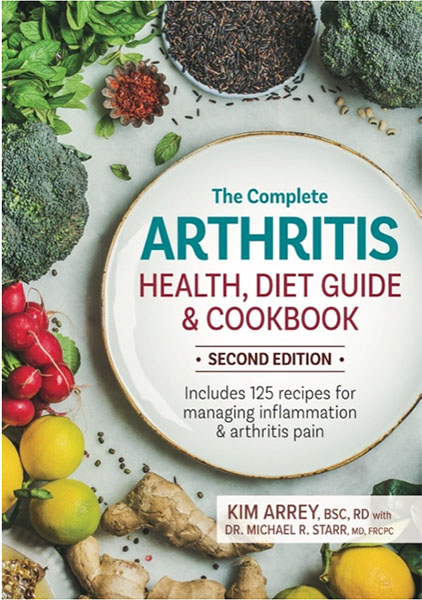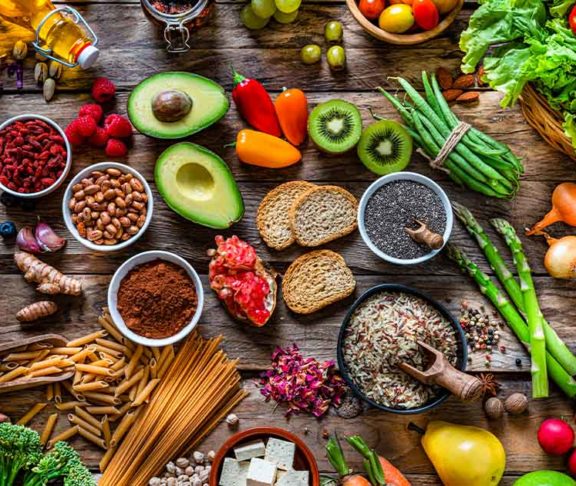
Kim Arrey
Registered Dietitian & Author
Mediaplanet sat down with Kim Arrey, registered dietitian and author, to discuss her experiences in helping patients with inflammatory arthritis manage their debilitating conditions.

Can you tell us about your involvement with rheumatology and arthritis?
I’ve been working with arthritis patients for many years. Initially, I was asked to do some presentations on diet and arthritis for AWISH, a local arthritis self-help group. That is where I first met Dr. Starr. Over the years, I’ve counselled many patients with different types of arthritis. Usually, they consulted me to help them to manage the conditions that go with arthritis, like heart disease, Type 2 diabetes, or even to help them manage their weight. And I spent a lot of time busting myths about what to eat when you have arthritis. But I also watched family members struggle with osteoarthritis, and now I have osteoarthritis in my shoulder.

As a registered dietitian (RD), how can nutrition and diet help manage inflammatory arthritis?
I’m always surprised by the number of sure-fire cures for arthritis attributed to removing certain foods from the diet. But unfortunately, there are no scientific studies that actually suggest that these dramatic diets that eliminate specific foods like dairy or nightshade vegetables or even foods containing gluten will help the majority of people with arthritis to feel better. Instead, the research tells you that you must eat a balance of anti-inflammatory nutrients in your food.
Eating well can help you lower your inflammation levels and reduce the likelihood of you developing other comorbidities of arthritis like heart disease and Type 2 diabetes.


What key themes have you observed as an RD dealing with arthritis patients?
Many patients with arthritis have difficulty grocery shopping and preparing food. Walking through the grocery store when you are aching and exhausted is tough. Preparing food brings other challenges. For example, how do you chop vegetables when your hands hurt? How do you stand to wash your vegetables at the sink? Unfortunately, this often leads people to select foods that are highly processed.
A better option is to use an online grocery service. Doing your groceries online saves time and energy. Another option is using a meal delivery service. Some people will choose a service that delivers food that’s proportioned and often ready to cook, limiting the amount of preparation you have to do. Others choose to have meals that are already cooked, delivered to their door. I often suggest to people that they can do a mix of all the options. Have some ready-to-eat meals in the freezer, meal-kits delivered, and extra vegetables and fruits delivered. Anything that will help you eat nutritious foods that are less processed is great. You might also want to invest in some special kitchen equipment that will help make food prep easier. There are many that are available. In my case chopping is difficult for me so I have a food processor on my counter so that I can easily chop any veggies. OXO Good Grips are amazing for people with arthritis in the hands and people with carpel tunnel syndrome. And they are easily available.

In your expert opinion, what are some healthy eating habits for people with arthritis?
Studies after studies tell us that the best anti-inflammatory diet is based on the Mediterranean diet. This eating pattern includes:
- Fatty fish
- Plant-based proteins like lentils, chickpeas, tofu, and pulses
- Lots of vegetables and fruits
- Healthy sources of fat like olive oil, olives, avocados, nuts, and seeds
- Lots of herbs and spices
- Limit red meat and sweets

What are some of the key messages you’d like to tell patients with inflammatory arthritis?
You will have a better chance of lowering your levels of inflammation if you include all the anti-inflammatory nutrients in your diet rather than by eliminating one or two foods or food groups from your diet. Taking foods out of your diet is more likely to reduce your ability to consume all the anti-inflammatory nutrients you need, while simultaneously causing you stress, which can lead to higher levels of inflammation. Unfortunately, there is no magic solution.

How can patients with the disease deal with challenges such as stress, cravings, and inadequate sleep?
Inadequate sleep can lead to more stress and increased appetite. It’s important to work with your medical team to ensure that your pain is well-managed so you can sleep well. Take the time to learn techniques like meditation and relaxation, which have been found to help with pain management. That might mean consulting with a psychologist who focuses on cognitive behaviour therapy and with a kinesiologist who can help you design an exercise program suited to your physical capacity or finding a program designed to help people with arthritis be more active and learn to better manage their pain. A great place to start is the Arthritis Society of Canada. They offer many resources on their website.



